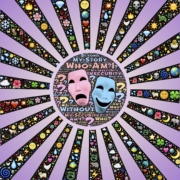Artists need artistic expression, other types of creative people need emotion abilities in the creative process
Can you think yourself as a creative person if you are not an artist?
Artists are generally acknowledged as the most creative individuals in a society. How about the creative individuals in other professional domains. Do they need to think of themselves as artistic? Do they require artistic expression to come up with exceptional products?
“Now I’m thinking very broadly and allowing these associations to come.” says entrepreneur Harriet Fagerholm. “ Of course, creativity has to do with art. Creativity is also related to artistic expression. But it’s not necessarily the art per se. That’s the outcome. But creativity can be about innovations, new thinking, whatever. ”
When asked about other areas of life where composer Matias Kupiainen sees the outcomes of creativity, he replied:
“I have a good example, this Chilean friend who had basically nothing when he came here to Helsinki. I rented a small 2×2 warehouse kind of thing and he was building pedals. Now he is running one of the biggest pedal industries in the whole world, 3.5 million net last year. He made it in less than 10 years.
He had a clear vision of what he wanted and he executed it. It was in the long-term what he wanted to do. Does it have to do anything with creativity in this kind of case? Yes it has, you need to have a product and you need to be creative to do the actual product and you have to believe in your product.
You can’t sell just nonsense. But when you have the product ready and have to sell it, then it’s more like business and technical approach again. And of course, you need to be lucky.
The product development is the creative, artistic process. Sure.” concluded Matias.
Talking about artistic expression as a requirement for creativity and about product development as an artistic process, it may be a bit confusing for possible creators outside the domains of art, music, dance or writing. What do the artistic expression and process refer to?
Artistic expression refers to the expression of emotion by works of art. Artists create the emotional expressiveness of their works. The better the emotions, – say love, sadness, nostalgia -, are captured in the final works, the more hooked the audience. Artistic expression stands as a criteria of the quality of creations in art, music, dances, and writing.
And the artistic process is in fact the creative process, when artists open up to their own emotions and allow their emotions to guide them in the implementation of their vision.
Artistic expression and process may thus be terminologies recognised by artists as requirements for achievement. However, these are two concepts with which other professionals, like sales engineer Oscar Santolalla may not identify themselves with.
Oscar thinks that he developed his creativity at a good level of 7, on a scale of 0 to 10. Yet, he does not perceive that his main job activities require creativity.
“What are the activities that you would label as creative activities?”, I asked Oscar.
“Everything that is art, it requires a lot of creativity.”, replied Oscar. “Probably it’s the field that requires most creativity, but it’s not only that. There are other fields. One is advertising. It’s clear that you need a lot of creativity to do good advertising. The same, you remember only the good ones. Some are really extremely good but it requires a lot of work on that. Also, in music, writing. Also, if you pay attention to a speech, like a politician’s speech, there is a lot of creativity to stand out. The majority are boring, the people don’t remember. But the ones that stand out have good creativity.”
To Oscar, creativity seems to be mainly associated with communication contexts, in arts, advertising and public speaking. He emphasizes that the most outstanding works are those where creators play with words, in the right order and cadence in a way that people get emotional.
When we associate creativity to arts mostly, there’s the risk of not recognising or appreciating our individual creative potential. We may not trust our creative selves to grab opportunities and make contributions in our professional roles, in domains of engineering, technology, science, entrepreneurship, or leadership.
Oscar may not think of himself as an artsy person, but he may realise that he does have a unique profile of creative potential. And each individual’s unique creative potential is better suited for specific tasks in a particular domain.
Any field needs innovation. For the diffusion of innovation, the new products need to become memorable and to have an effective impact on the consumers who adopt the innovation.
For the clarity sake, we may want to avoid talking about artistic expression in innovation in engineering, science, technology, or management. Instead, we could talk about the affective impact of original products in the target audience. And equally importantly, we may bring up the importance for creators, be they artists or non artists, to possess emotional ability in order to come up with a significant improvement or an innovation or a remarkable creative work.
Emotions ability refers to the capacity to think and reason about and with emotions during the creative process. It’s true, the emotional expression and passion of artists is more evident in their works. In reality, all types of creative people, including scientists, engineers, leaders and entrepreneurs, need emotion ability and passion for their interest if they are to make a difference in the chosen domains of work. (Mayer et al., 2008,; Ivcevic & Hoffmann, 2019)
Emotions affect the whole creative process in any form of creativity
How emotions are used and managed in the creative process? Professor Vincenzo Cerullo needs to create positive emotions that get his creative juices out when he prepares for a public talk. He describes how he generates emotions in himself by envisioning himself in front of the audience.
“I don’t know where to put the emotion and I have been trying also to talk before the TEDx talk to other people who are supposed to be experts on creativity.” says Vincenzo. “I don’t know where to put emotions, but I have to say, I think to me, it works very well to try to bring up emotion.
Let’s say that I will have a keynote lecture in the university, something big that they are arranging and I am going to give a lecture there. A way for me to come up with something original, nice or a way to get my creativity out a little bit is, if I put myself there. Preparing the lecture, I’m actually already physically there and I can already see the people, they are looking at me, I can see the attention (or tension). It’s a positive emotion and I think that positive emotions give me, the colour or the thing I want to see.”
Sometimes, it can be that negative emotions such as frustration or boredom, direct the attention and thinking towards problem-solving aspects in the environment. And then, cognitive flexibility helps us see familiar objects or information in different ways.
For instance, Tulia’s calling was initiated thanks to her ability to act upon her frustration with the format of the networking events that she started attending when she moved to Zurich.
“So when I got to these events in Zurich, there was one thing that I’ve noticed. They had a format, a typical networking event. There’s the speaker, usually a woman, with the topic, they come, they present it, there was usually a nice dinner and that was it. And I felt many times where the speaker, the presenter had a nice topic, something interesting that I wanted to talk to the person afterwards.
I felt there was a huge gap and I started observing that this was happening in several different events. There was the speaker, the expert was there and you, the audience, you’re there, so there was not a bridge. And that bothered me, because I felt like, well, if you come and you deliver something, the people enjoyed it, people of course want to talk to you and if you leave is kind of half work done.
The only two things I had in mind was this, that there’s going to be a women event, only women on stage, could be men as audience but only women on stage. And I want them to share their story, their life story, their professional story, whatever story it was they wanted to share. But a story, I didn’t want it to be a business presentation.”
The new direction in Tulia’s entrepreneurship started from her vision on creating a different speaker-audience connection.
“If you come on stage to share something, and you don’t want to engage with the people who are listening to you, it’s kind of a bit weird. So long story short, this became my signature event, the Awe Summit which I’ve been doing since 2014, I did it in Zurich four times, then we went to Barcelona twice and we went to Porto in Portugal once and I want to do it here in Munich, next year, let’s see.”
Yes, artists need artistic expression. But what creators, from all walks of professional lives, need is to recognise two ways of working with their emotions.
First, how to recognise which emotions (i.e.., happiness or anger) to activate in themselves to increase their levels of creativity to perform a task at hand.
Second, they need to understand how their emotions represent cues about the effort needed to achieve an outcome. Positive moods indicate the goal is about to be reached. Negative moods signal that more effort is needed towards reaching a goal.
Summing up, it is not necessary to think of yourself as an artist when you have aspirations of making a contribution in domains of science, technology, engineering, entrepreneurship, etc. However, assuming you do perceive yourself as a creative person, you may want to make it a priority to understand your emotions and the potential that this ability holds for the quality of your creative process and outcomes.
Immense gratitude for the following amazing people. Because they accepted to meet me for an interview on their creativity, this article could be written.
Harriet Fagerholm, creator of InTune, Academy of Cultural Evolution
Matias Kupiainen, composer and professional guitarist in the Finnish power metal band Stratovarius
Oscar Santolalla, sales engineer and author at Ubisecure, postcast host at Time to Shine
Tulia Lopes, communication architect, presentation trainer, speaker, author
Vincenzo Cerullo, immunology professor at University of Helsinki and director at Drug Research Program.
References:
Ivcevic Z. & Hoffmann J., 2019, Emotions and Creativity, The Cambridge Handbook of Creativity, pp. 273-205.
Mayer, J.D., Roberts, R.D., & Barsade, S.G., 2008 Human abilities: Emotional intelligence, Annual Review of Psychology, 59(1), 507-536.
https://pixabay.com/illustrations/identity-persona-story-narrative-1815811/



